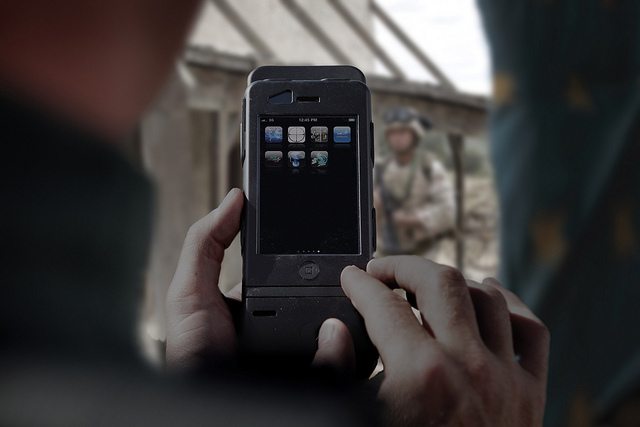Never mind the non-stop collection of metadata and other sneaky surveillance tools being implemented by the NSA: a new report has revealed that the National Security Agency’s spy powers allow the government to grab location data on just about anyone.
In an article published by the Washington Post over the weekend, journalist Dana Priest detailed how one of the most secretive agencies administered by the United States government has expanded drastically in the decade-plus since the terrorist attacks of September 11, 2001. An increased demand for intelligence encouraged the development and implementation of surveillance tactics previous confined to the pages of science fiction, she wrote, and those tools today rival even what has already been unearthed by the NSA’s undercover operations.
“Lacking a strong informant network to provide details about al-Qaeda, US intelligence and the military turned to the NSA’s technology to fill the void,” Priest wrote.
According to Priest, policies enacted in a post-9/11 intelligence community involved a pivotal role played by the National Geospatial-Intelligence Agency, a Department of Defense office that was created to collect battlefield intelligence using the most sophisticated of means available. In the wake of 9/11, that involved being able to pinpoint the location of a suspected adversary using only a cell phone number, and agents with that kind of access quickly were on-demand outside of the walls of the NGIA and NSA.
In one incident reported by Priest, a Navy SEAL working within a makeshift Central Intelligence Agency operations center in one part of the US called up an agent in the basement of the NSA’s base in Augusta, Georgia and insisted a team of geolocation specialists identify the exact location of an insurgent in Afghanistan using only the suspect’s telephone number.
Once all parties were properly coordinated, Priest wrote “they aimed the NSA’s many sensors toward individual targets while tactical units aimed their weaponry against them.”
Priest went on to call that moment and others like it revolutionary with regards to what was to come for the NSA. The intelligence tools once used to track and spy on the leaders of competing countries and adversaries around the world had been deployed to target a single suspected terrorists 8,000 miles away using the resources utilized by an ever-expanding agency still only in its infancy.
Thanks to a bevy of whistleblowers who exposed the agency’s use of domestic surveillance years before the name Edward Snowden was known, today it’s common knowledge that the communications of American citizens can be inadvertently collected by the NSA. Leaked documents attributed to Snowden during the last several weeks have shined further light on how the Foreign Intelligence Surveillance Act, the PATRIOT Act and an array of tactics take conversations sent over telephone wires, fiber optic cables and Wi-Fi signals and send them to Uncle Sam.
In her article for the Post, though, Priest wrote that these tools are coupled with military agencies at times to create a quick and coordinated action that often ends in the execution of an alleged enemy.
“By September 2004, a new NSA technique enabled the agency to find cellphones even when they were turned off,” Priest wrote. The tactic was called “The Find,” and reportedly it gave the Joint Special Operations Command the tools to track down members of al-Qaeda and other extremist group and then order a hit. Combining it with another new system, the Real Time Regional Gateway, both intelligence and military officers could access any type of surveillance in a given region under which a target could be tracked.
“We Track ‘Em, You Whack ‘Em,” was a motto that the Augusta, Georgia geolocation agents quickly adopted, Priest wrote.
But 12 years after the September 11 attack – and more than three since al-Qaeda leader Osama bin Laden was executed thanks to tactics employed by the NSA, CIA and others – these operations have not been scaled back. Instead, rather, the NSA has expanded around the globe and is currently in the midst of building what will be one of the largest intelligence facilities in America.
That structure, a million-square-foot data storage facility in Bluffdale, Utah, when all is said and done will collect domestic intelligence that one former NSA worker said isn’t necessarily relevant to anything.
Bill Binney, a former NSA agent that resigned after 9/11 with more than three decades of experience under his belt, said the government is collecting data before even figuring out what to do with it.
“They would have plenty of space with five zettabytes to store at least something on the order of 100 years’ worth of the worldwide communications, phones and emails and stuff like that,” Binney told Wired last year, “and then have plenty of space left over to do any kind of parallel processing to try to break codes.”
“It’s everything – phones, emails, twitter, any kind of digital communications that they’ve had. I think it’s into banking as well, but I don’t know that for sure. I do believe they’re doing it,” he added to Libertas Institute in an interview last month.
“My estimate is that there’s a little over 280 million Americans in the database, several times because one person can have a work phone, home phone, mobile phone, online banking, multiple email addresses. Two-hundred-and-eighty million people are in there at least, and the ones that aren’t are babies in cribs, people in hospice, others not doing anything electronic. Each person is in there between several hundred and several thousand times. It’s aggregated data over a now 12 year period.”
Meanwhile, the NSA defends the construction of both foreign and domestic facilities, citing to Priest the need to stay one-step ahead of the adversary.
“The notion of constant, unchecked, or senseless growth is a myth,” the NSA said in a statement to the Post.










